
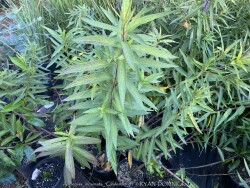

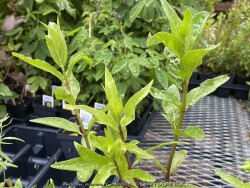
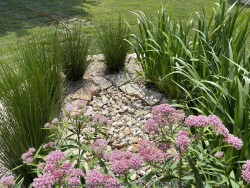
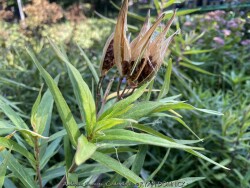
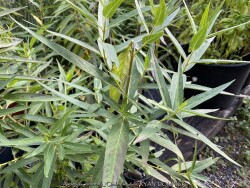
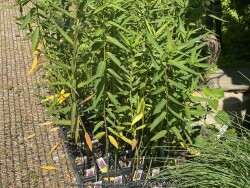
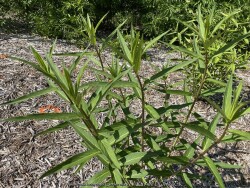
Plant Min Zone: 3a
Plant Max Zone: 9a
Sunlight: All Day Full Sun, Full Sun, Part Sun
Water / Rainfall: Average, High
Soil Quality: Average, Rich
Bloom Season: Summer, Late Summer
Flower Color: Pink, Light Pink, White, Multi-Colored
Berry / Fruit Color: Brown-Beige
Spring Foliage Color: Green
Summer Foliage Color: Green
Fall Foliage Color: Red, Orange, Gold, Purple
Evergreen Foliage: No
Winter Interest: Some
Scented Flowers: No
Drought Tolerance: Low, Medium
Wet-Feet Tolerance: High
Humidity Tolerance: Medium
Wind Tolerance: Medium
Poor Soil Tolerance: Clay Soils
Height: 3' - 5'
Width: 2' - 3'
Growth Rate: Slow, Medium
Service Life: Medium: 3-5 years
Maintenance Need: Low
Spreading Potential: Low
Yearly Trimming Tips: Trim Perennial to Ground Around First Fall Freeze: No Winter Interest.
Plant Grouping Size: Small Grouping of 3-5
Best Side of House: South Exposure, West Exposure, East Exposure
Extreme Planting Locations: Base of Retaining Wall Locations, Resistant to Rabbits
Ornamental Features: Multiple Seasons of Interest
Special Landscape Uses: Naturalizing
Possible Pest Problems: Aphids
Plant Limitations: Needs Regular Irrigation, May be Poisonous, Sometimes Mistaken as Weed
Shippable in 2026: YES
Pink Swamp Milkweed (Asclepias incarnata) is a herbaceous perennial plant species native to North America. The foliage is bright green and upright. The blooms occurring in early to mid-summer are pink to mauve (sometimes white). After blooming, green seed pods are attractive. They finally split open in late summer releasing silver fluffy floating seeds that are whisked away in the wind. This same natural mechanism for seed dispersal is similar to that used by most other milkweed (Asclepias) species. Fall color is an attractive yellow to gold with red highlights. It is frequently grown as a bog plant needing constantly moist soil rich in organic matter. As a rain garden plant, it will thrive is a depressed area in the landscape that collects rain water from a roof during spring and summer periods of rain but then go dormant if the water hole dries out completely. This species is not shade-tolerant and will get crowded out if the rain garden becomes too dense. Pink Swamp Milkweed may also be grown in average garden soils provided extra water is supplied during droughts. It is cultivated as a garden plant for butterflies and birds at all life stages: foliage for caterpillars, nectar for butterflies and other insects, and seeds for birds. It has a latex sap containing toxic chemicals that helps it repel other insects and other herbivorous animals. In the home landscape, this species does not spread like some other milkweeds. The plant is also timid about self-seeding because seeds have to germinate in mud and quickly die if it dries out. No worries about invasiveness with this one, just count on it being a beautiful tall perennial for many years in the garden! The species is not shade-tolerant and is not a good vegetative competitor.